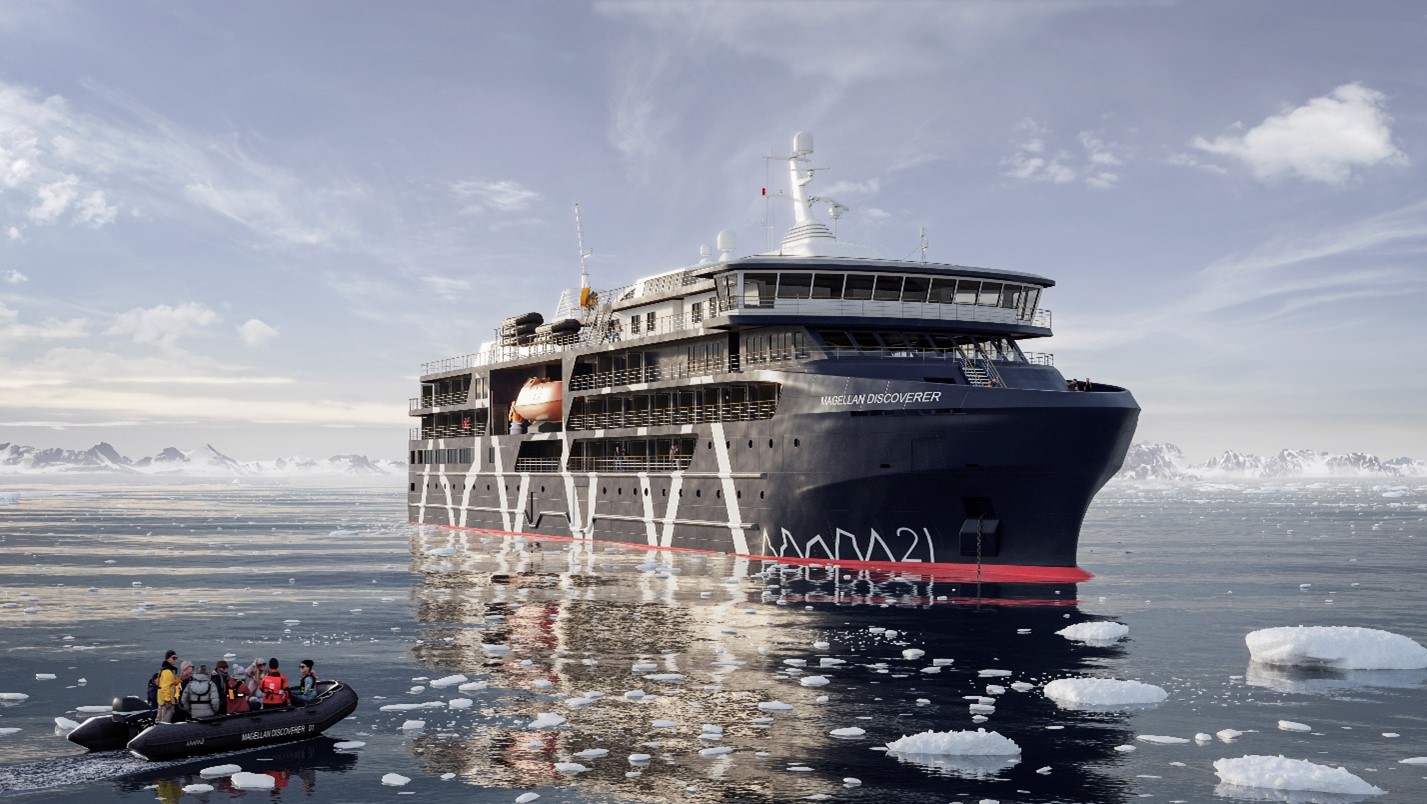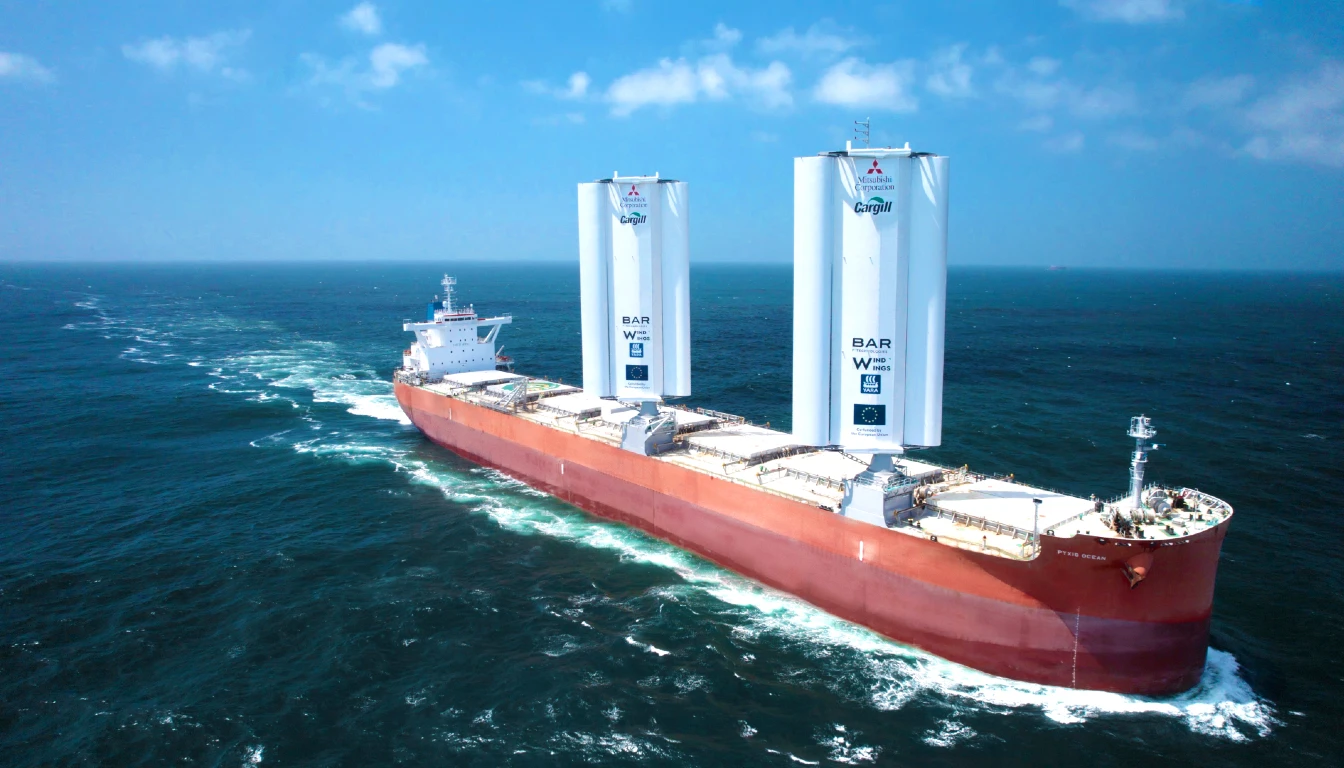The shipping industry has been slow to embrace fuel innovation. Ships, in particular larger vessels, are extremely heavy and often only suited to traditional fuels. But there’s been a recent wave of news about novel, greener technologies becoming available.
Methanol
When used as marine fuel, methanol offers significant environmental benefits, nearly eliminating particulate matter and sulphur oxides and reducing nitrogen oxides by up to 80% during combustion relative to petroleum-based fuels.
Data from classification society DNV indicates a significant uptick in the adoption of methanol as a maritime fuel, forecasting that by 2027, 300 methanol-fuelled vessels will be operational, excluding bunker barges and retrofit projects. Notably, over 70 new methanol-fuelled ships have been ordered already in 2024.
In August alone, Proman, a leading methanol producer, has supplied a total of 2,100 tonnes of methanol fuel to ships, contributing to a cumulative 12,500 tonnes over the past year.
It recently announced the successful refuelling of its latest methanol-powered tanker, the Stena Prosperous, at its facilities at the port of Point Lisas, Trinidad, utilising methanol produced locally.

Proman’s Stena Prosperous.
The Stena Prosperous, a 49,900-dwt IMOIIMeMAX vessel, is part of a six-strong fleet commissioned by Proman in collaboration with Stena Bulk back in 2019. These vessels were delivered sequentially from 2022, with the final ship expected by January 2024. The Stena Prosperous embarked on her maiden voyage following her naming ceremony in Singapore this May, making notable stops in Indonesia, Brazil, and Savannah in the United States before finally arriving in Trinidad.
Initially bunkered in Singapore with a blend comprising 20% green and 80% conventional methanol, the journey to Trinidad resulted in an impressive 31% reduction in CO2 equivalent emissions compared with a similar voyage using very low sulphur fuel oil (VLSFO).
With all six ships now operational on methanol rather than VLSFO, projected greenhouse gas emissions savings for 2024 are estimated to be upwards of 8,000 tonnes.
Anita Gajadhar, Proman’s Executive Director of Marketing and Logistics, highlighted the growing acceptance of methanol as a mainstream marine fuel. “Methanol is increasingly becoming a mainstream marine fuel as shipowners understand its versatility and cleaner-burning properties,” she explained. Gajadhar further noted that methanol’s consistent molecular composition allows it to be blended seamlessly, facilitating a gradual transition towards green methanol and paving the way for achieving net-zero emissions.
Electrification
Electrification of maritime transport has also surged over the past 15 years. The global fleet of battery-equipped vessels escalated from just seven in 2009 to almost 950 by mid-2024. This remarkable trend has been propelled by substantial innovations in battery life and charging speed.
The maritime sector had an additional 433 battery-equipped boats either on order or under construction as of June 2024. Europe and Norway are at the forefront of this transformation, collectively hosting nearly 70% of these vessels.
Breaking down the operational categories, around 64% of these vessels utilize hybrid-electric power systems, 19% are purely electric, and 17% function as plug-in hybrids. This distribution reflects diverse approaches toward reducing emissions and enhancing fuel efficiency.
The surge in battery-powered maritime vessels is largely driven by stringent regulatory mandates aimed at curbing CO2 and greenhouse gas emissions. Furthermore, innovators such as Kongsberg Maritime, Corvus Energy and Eco Marine Power and supportive government incentives have played pivotal roles in this rapid adoption.
Fundamental improvements in battery manufacturing capabilities, coupled with advances in battery chemistry and safety, have been critical enablers of this transition.
Norway has emerged as a leading innovator in the electrification of maritime transport. The country has championed the development of advanced batteries and fuel cells, implemented electric shore power for zero-emissions propulsion, and adopted LNG fuel for cutting-edge tugboat operations, including three operational tugs at an LNG export terminal near Hammerfest.

Corvus Energy will supply the battery energy storage system onboard the Magellan Discoverer— the first hybrid diesel-electric vessel to be constructed in South America. The vessel is a luxury polar expedition cruise ship to be built at the Chilean shipyard, Astilleros y Servicios Navales S.A. ASENAV for cruise operator Antarctica 21. Corvus Energy will supply an Orca Energy Storage system to be used for zero-emission operation mode.
Ammonia
Ammonia is also gaining attention as a viable zero-emission fuel option for the shipping industry. It offers several advantages, including carbon-free combustion when produced sustainably, abundant availability of its precursor nitrogen in the atmosphere, and existing infrastructure for storage and transportation. Moreover, the development of internal combustion engines compatible with ammonia is progressing.
Despite these advantages, there are also challenges to address. Ammonia’s high toxicity poses safety concerns, necessitating careful handling and stringent safety measures. Its lower energy density compared to conventional fuels requires more onboard storage space. Additionally, while ammonia combustion eliminates CO2 emissions, it may produce nitrous oxide, a potent greenhouse gas. Currently, the supply of green ammonia is limited.
Despite these challenges, studies suggest the potential for green ammonia to fulfill a significant portion of the global shipping industry’s fuel needs. Furthermore, experts envision ammonia emerging as the leading alternative fuel by 2050, comprising a substantial share of the fuel mix for large merchant ships.
Finnish equipment manufacturer Wärtsilä has recently signed a landmark contract with Norwegian shipowner Eidesvik Offshore, aimed at converting an offshore platform supply vessel (PSV) to operate using ammonia as fuel. The vessel in question, the ‘Viking Energy’, is scheduled for conversion in early 2026 and is set to commence operations on ammonia within the first half of the same year.

The Viking Energy will be converted to run on ammonia in 2026.
This initiative, supported by energy giant Equinor, will make Viking Energy the world’s first in-service ammonia-fuelled ship. Equinor, which has chartered the Viking Energy, is contributing to the financing of this conversion.
Håkan Agnevall, President and CEO of Wärtsilä, emphasised the importance of industry-wide collaboration to meet the International Maritime Organization’s (IMO) target of net zero emissions by 2050. “In just 25 years – the lifetime of a single vessel – shipping needs to get to net zero emissions. Achieving this will require coordinated action by all maritime industry stakeholders to bring about the system change needed to accept a new generation of sustainable fuels,” he said.
Gitte Gard Talmo, CEO & President of Eidesvik Offshore, spoke on the legacy of pioneering innovative technologies for emission reduction. “Eidesvik has a unique history of pioneering the implementation of innovative emission-reducing technologies, and we are proud to spearhead yet another groundbreaking project together with Wärtsilä and Equinor.”
Wind
Let’s not forget about the oldest maritime propulsion method – wind power.
With growing interest in reducing fuel consumption and emissions, wind-assisted propulsion systems are also gaining momentum in the maritime industry. While fully wind-powered large commercial ships are yet to become mainstream, several tankers, bulk carriers, container ships, and cruise ships have successfully incorporated wind power into their propulsion systems.
Examples include the Maersk Pelican, SC Connector, Pyxis Ocean, Afros, MV Beluga SkySails, Estraden, and Viking Grace, each utilizing different wind-powered technologies. From rotor sails to kites and tilting rotor sails, these ships have demonstrated significant fuel savings and emissions reductions.
One notable future project is the Oceanbird, a concept for a 7,000-car capacity wind-powered car carrier. Designed with five 80-meter tall wing sails, it aims to reduce emissions by 90% compared to conventional vessels.
Despite these promising developments, most of these ships still primarily rely on conventional engines, with wind power serving as a supplementary source to enhance efficiency.
As the maritime industry strives to meet emissions reduction targets, the technology will continue to evolve, and more ships are likely to adopt these alternative propulsion systems. But it’s going to be a long journey.




